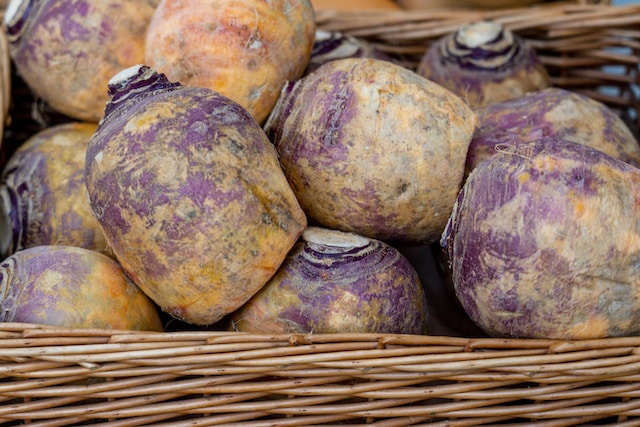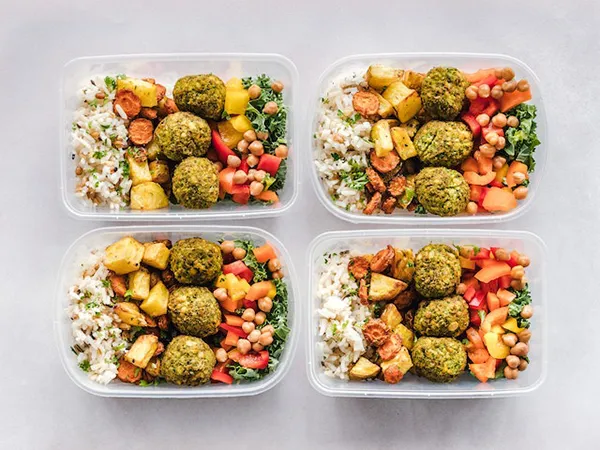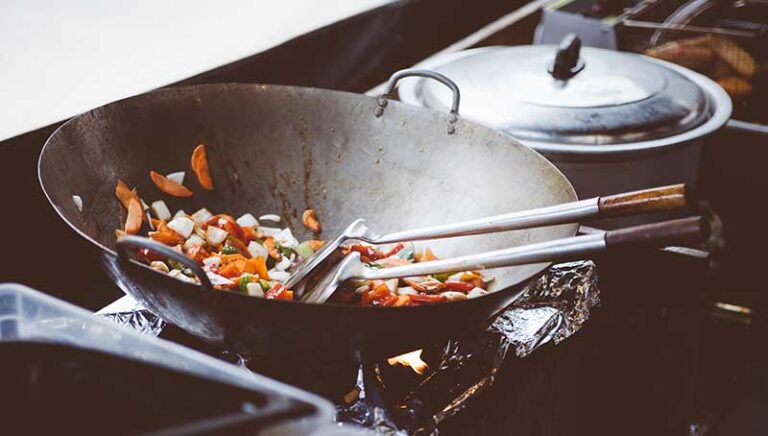How to Dice Carrots: Master 12 Ways (with Step-by-Step Photos)
Well hello there! It’s your pal Ksenija here, back with another fun kitchen tutorial. As a chef with over a decade of chopping experience across Europe’s finest restaurants, I’ve picked up more than a few tricks for dicing carrots quickly and precisely.
Today, I’m thrilled to share all my carrot-cutting knowledge to help YOU dice carrots like a pro in your home kitchen! From your basic strips to advanced techniques like the fine brunoise. I’ve got all the cuts covered.
So grab your gear and let’s get chopping and learning how to dice carrots!
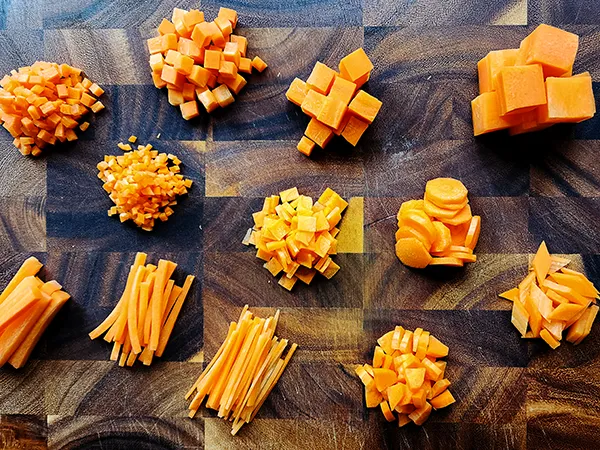
How to Prep Carrots before chopping?
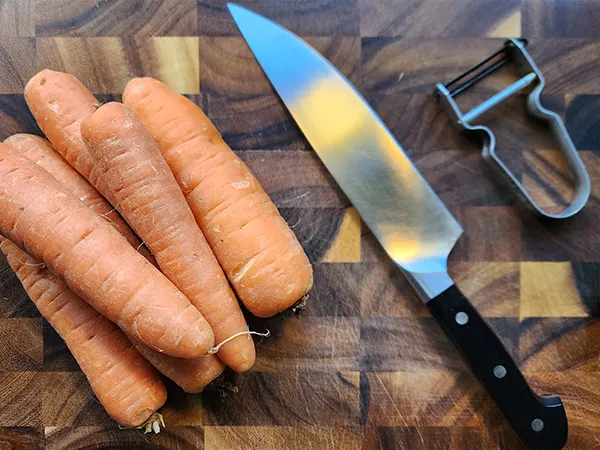
Before you can get diced carrots, let’s go over some key prep steps to set you up for success. Work on a large, flat surface, with a sharp chef’s knife, and tuck knuckles under for safety.
Here are step-by-step instructions on how to prep the carrot.
Prepare a cutting board, a large chef’s knife

Wash carrots thoroughly under running water

Peel carrots using a Y or straight vegetable peeler or scrape it with a knife
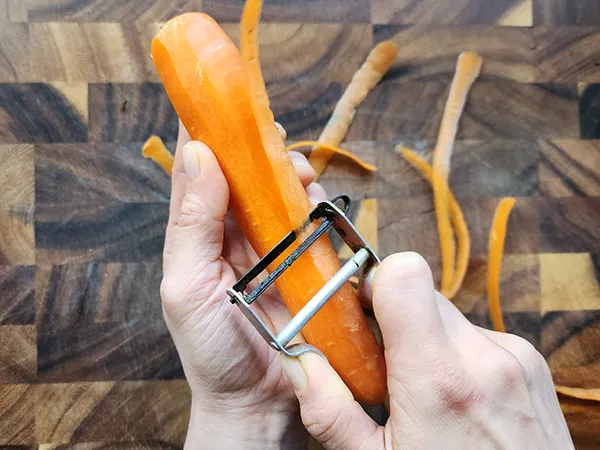
Trim off stem and root ends
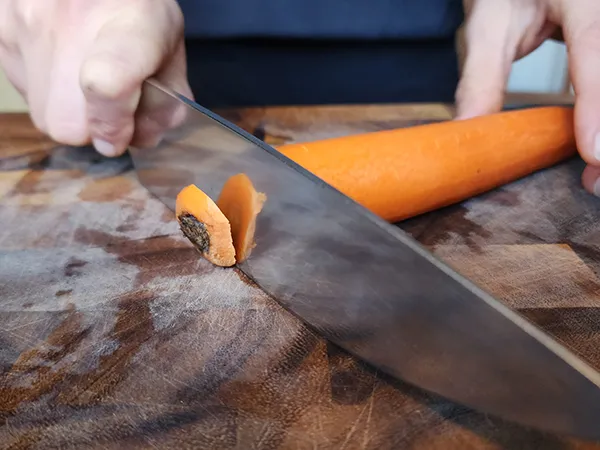
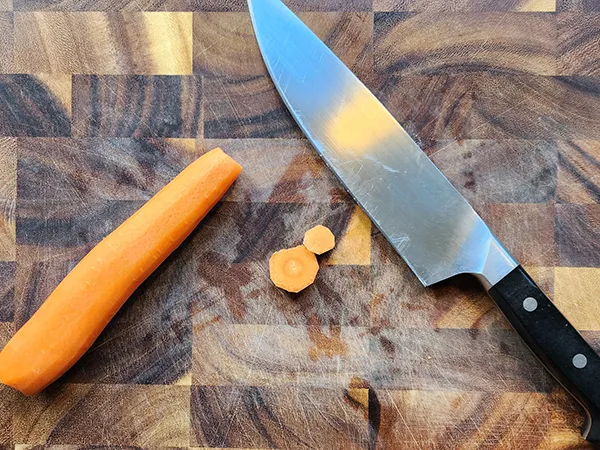
Now that your carrots are ready, it’s time to learn the juicy part – the actual dicing techniques!
How to dice carrots? Dicing Techniques
To get a dice you will first have to slice it into strips and then slice across, simple right? Well, there is a bit more to that, let me teach you all the techniques I know for cutting, slicing, and dicing carrots.
I’ve broken down the main cutting methods into three sections: strip cuts, dice/cube cuts, and special cuts. So it is a bit easier to digest for you.
Strip Cuts
Let’s start with strip cuts! Strip cuts don’t require a lot of finesse, making them the perfect place to begin mastering your knife skills.
There are a few main ways to cut the carrot into strips Batonnet (Fancy name for carrot sticks), Julienne (another fancy name for thinner sticks), and fine Julienne (yes, even thinner slices)
And here is how to do it.
Batonnet – carrot sticks stews or platters.
Start with trimmed, peeled carrots. Cut them into same-size pieces about 1-2 (3-5cm) inches long.
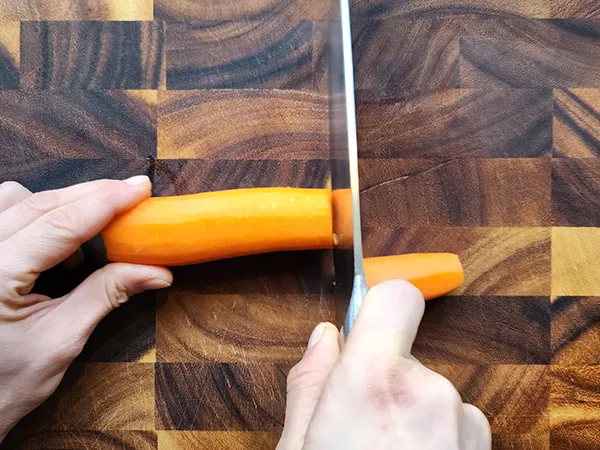
Then slice it into uniform slices about 1/4 inch (6mm) thick.
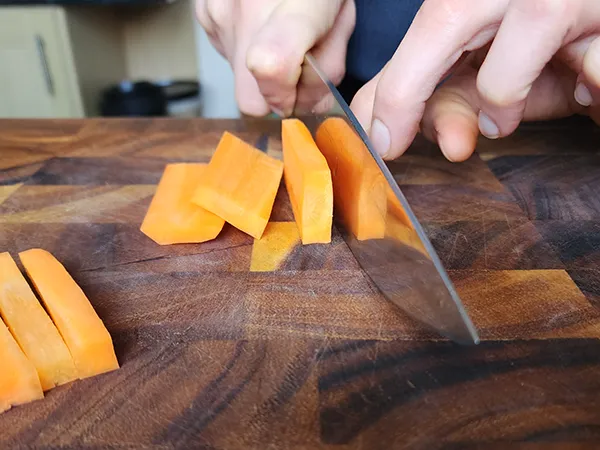

Make even parallel cuts of the same thickness about 1/4 inch (6mm), slicing them into matchsticks.

For the right Batonnet size, aim for approximately 1/4 x 1/4 x 1-2 inches (6mm x 6mm x 3-5 cm)

Julienne – matchsticks for stir-frying and soups.
Start with trimmed, peeled carrots. Cut them into same-size pieces about 1-2 (3-5cm) inches long.

Then slice it into uniform slices about 1/8 inch (3mm) thick.
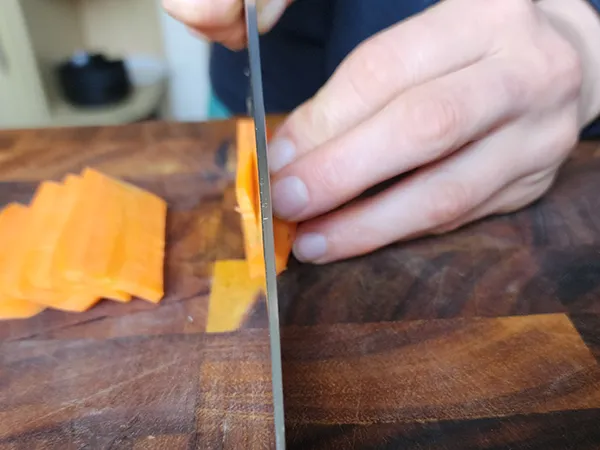
Lay the slices neatly on top of each other, aligning the edges so they are stacked evenly, and make even cuts across the stacked sticks, slicing them into matchsticks. Try to maintain consistency in their thickness around 1/8 inch (3mm).
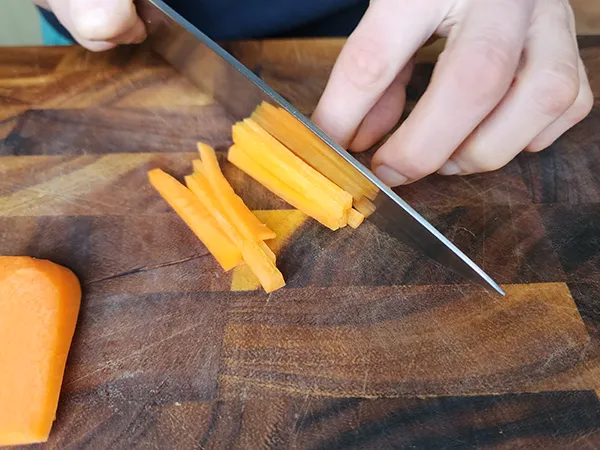
For the right julienne size, aim for approximately 1/8 x 1/8 x 1-2 inches (3mm x 3mm x 3-5 cm)
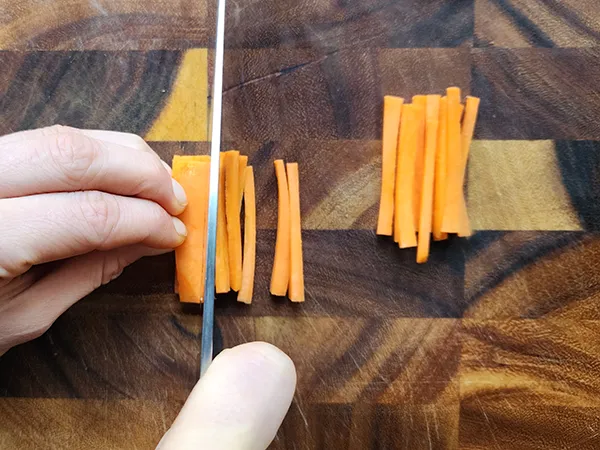
Fine julienne – Thin matchsticks as a garnish or in stir-fry.
Start with trimmed, peeled carrots. Cut them into same-size pieces about 1-2 inches long.
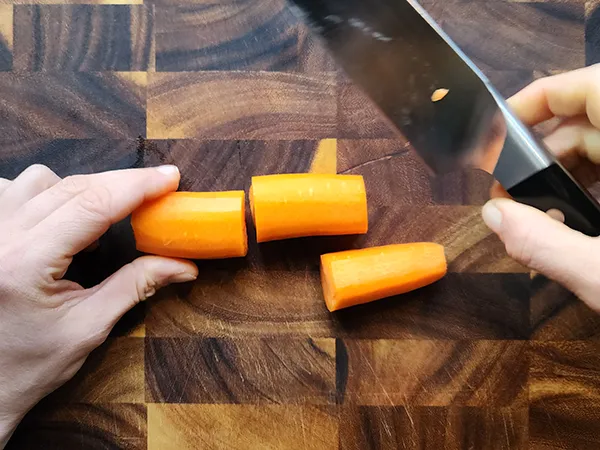
Then slice it into uniform slices about 1/16 (1.5mm) inch thick.

Lay the slices neatly on top of each other, aligning the edges so they are stacked evenly, and make even cuts across the stacked sticks, slicing them into matchsticks. Try to maintain the same thickness around 1/16 inch (1.5mm).
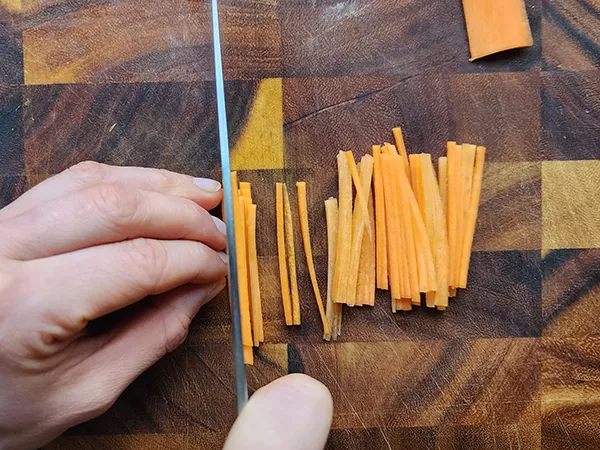
For the fine julienne size, aim for approximately 1/16 inch x 1/16 inch x 1 to 2 inches (1.50 mm x 1.50 mm x 3 to 5 cm)
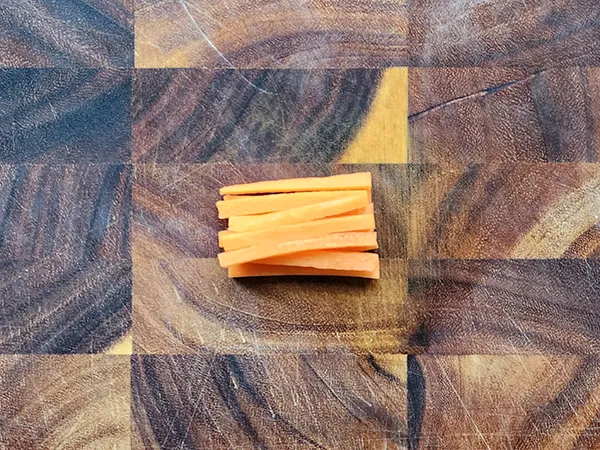
Dice/Cube Cuts
Different preparations require different sizes of dice. The names given to the dice are burnoise small medium and large dice. Then we will go over other dicing techniques called paysanne (peasant) and fermiere (farmer) cuts.
Brunoise – Tiny dice for garnish, salsas and sauces.
Start with cutting the carrot into matchsticks (julienne). Try to maintain consistency in their thickness around 1/8 inch (3mm).

Then rotate the stack 90 degrees and repeat even cuts across the same thickness around 1/8 inch (3mm).
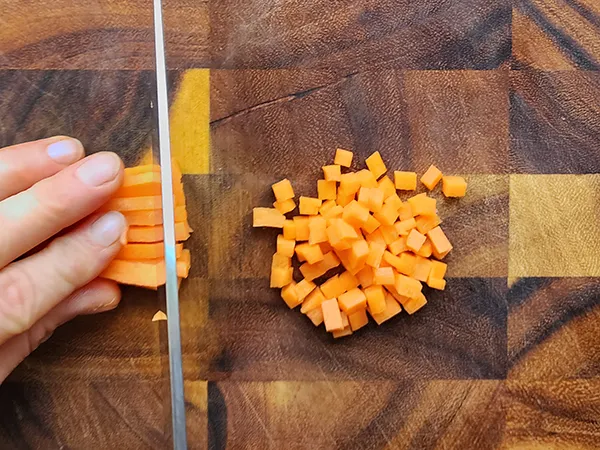
For the brunoise size, aim for approximately 1/8 x 1/8 x 1/8 inches (3mm x 3mm x 3mm)
Small dice – cubes for soups, and salads.
Start with trimmed, peeled carrots. Cut them into same-size pieces about 1-2 (3-5cm) inches long.

Then slice it into uniform slices about 1/4 inch (6mm) thick.

Cut carrots into uniform batons about 1/4 inch (6mm) thick.

Rotate the stack 90 degrees and repeat even cuts across about 1/4 (6mm) inch apart.


For the small sized dice cut, aim for approximately 1/4 x 1/4 x 1/4 inches (6mm x 6mm x 6mm)

Medium dice – cubes for stews, roasting.
Start with trimmed, peeled carrots. Cut them into same-size pieces about 1-2 (3-5cm) inches long.
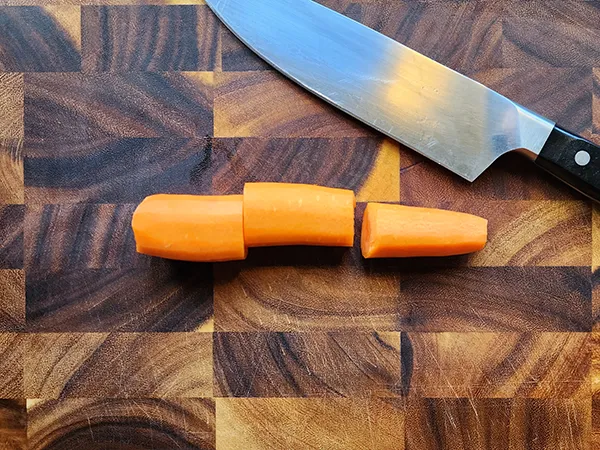
Then slice it into uniform slices about 1/2 inch (12mm) thick.

Cut carrots into uniform batons about 1/2 inch (12mm) thick.

Rotate the stack 90 degrees and repeat even cuts across about 1/2 (12mm) inch apart.
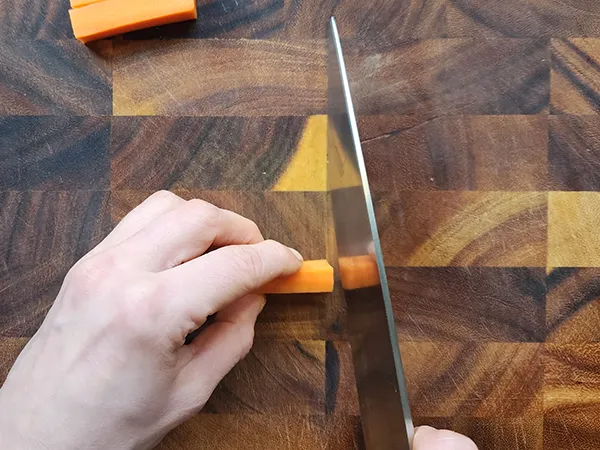
For the medium-sized dice cut, aim for approximately 1/2 x 1/2 x 1/2 inches (12mm x 12mm x 12mm)
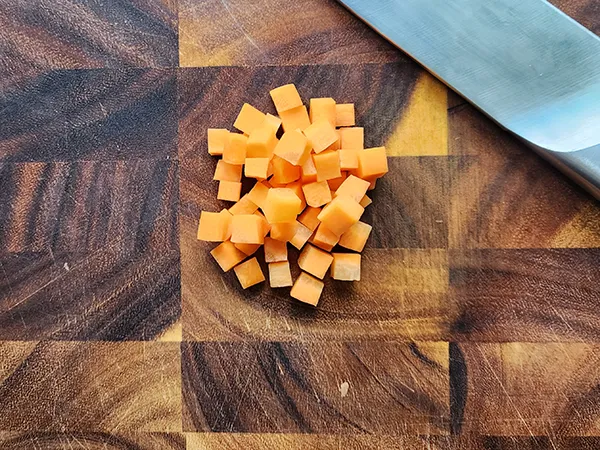
Large dice – perfect cubes for oven stocks, roasting, and stews.
Start with trimmed, peeled carrots. Cut them into same-size pieces about 1-2 (3-5cm) inches long.
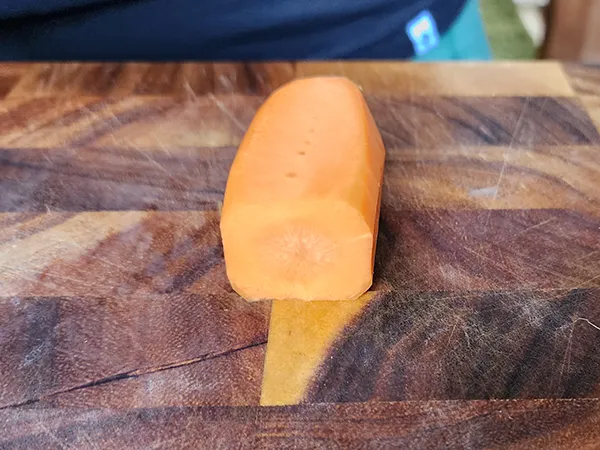
Slice into half lengthwise.
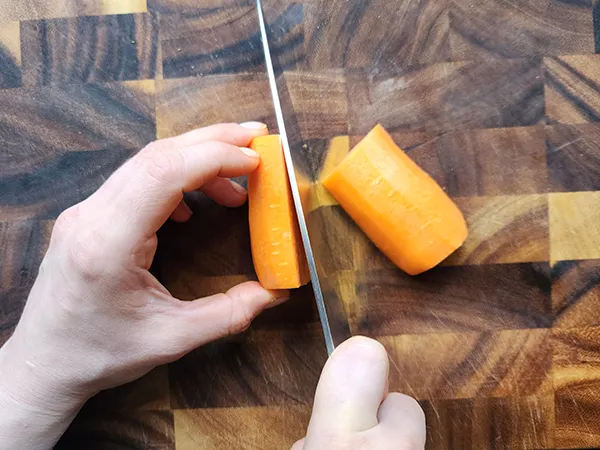
Cut carrots into uniform batons about 3/4 inch (20mm) thick.

Rotate the stack 90 degrees and repeat even cuts across about 3/4 (20mm) inch apart.

For the large diced carrots, approximate size 3/4 x 3/4 x 3/4 inch (20mm x 20mm x 20mm)
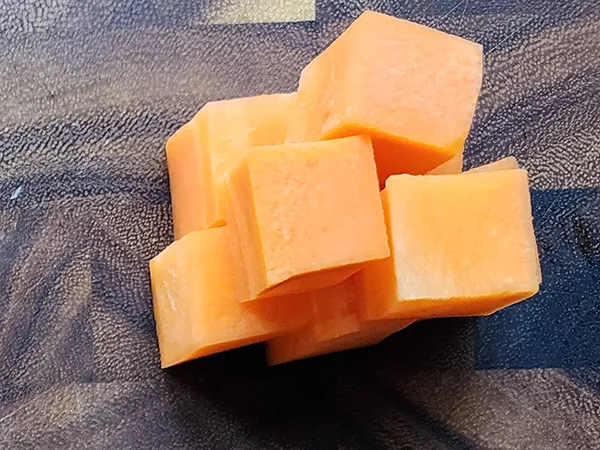
Paysanne – Rectangular cuts for soups and presentation.
Trim the peeled carrot into a 1/2 inch (1 cm) square baton.

Rotate 90 degrees and slice across about 1/8 inch thin (3mm)
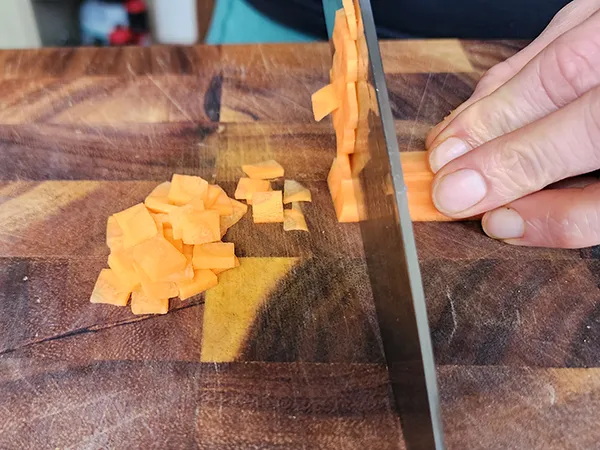
Use for soups, stews, and anywhere you want an orderly presentation. Approximate size 1/2 x 1/2 x 1/8 inch (10mm x 10mm x 3 mm)
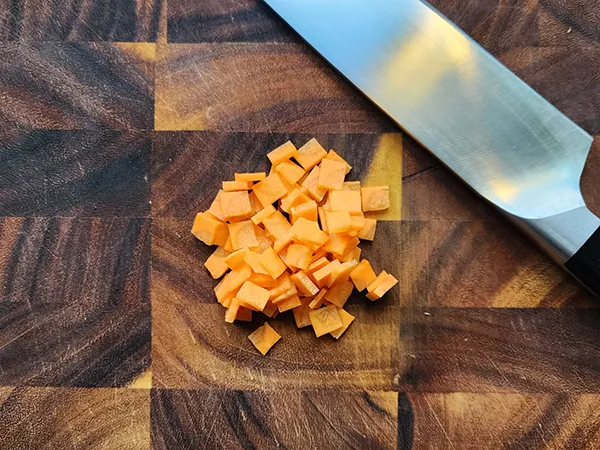
Fermiere – more rustic presentation for dishes with home-style appeal.
Cut the carrot into half, length-wise
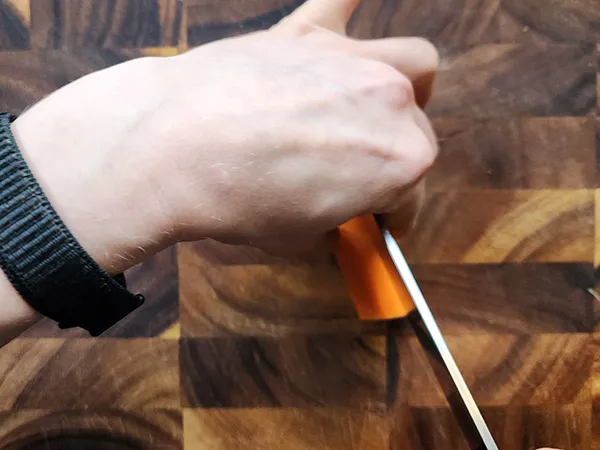
Then again into quarters
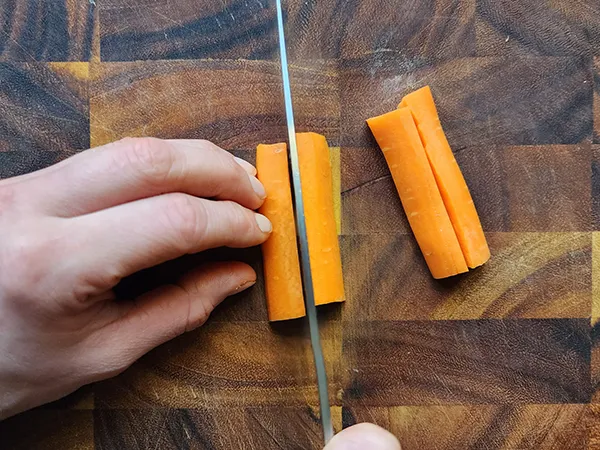
Rotate the long matchsticks and align them to cut in 1/8 inch (3mm) thin slices
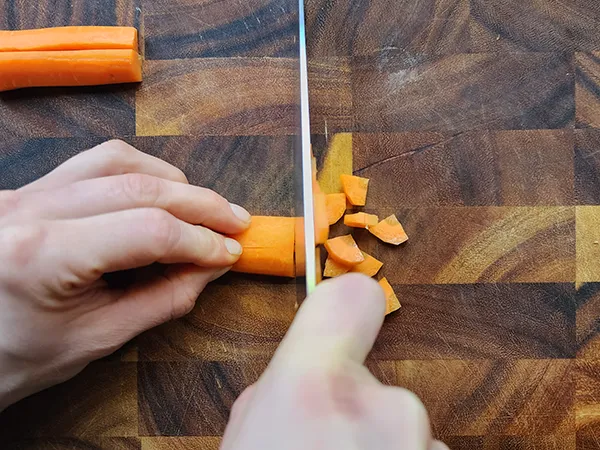
Use for stews, soups, roasts – anywhere you want a rustic, home-style presentation. Approximate size 1/2 x 1/2 x 1/8 inch (10mm x 10mm x 3mm)

Special Cuts
Rondelle – Round coin slices for salads, and slaws.
Start with trimmed, peeled carrots.

Start slicing into rings, the thickness will depend on the desired dish but aim for 1/8 to 1/2 inch (3mm to 10mm)

Lozenge – Diamond shapes for garnish and presentation.
Start with trimmed, peeled carrots. Slice it into thin strips around 1/8 inch (3mm)

Then slice across into 1/2 inch (10mm) thin slices and stack them
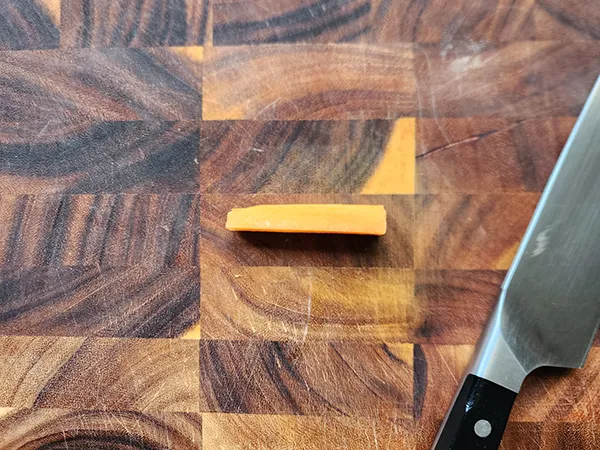
Then slice across at a 45-degree angle to get diamond shapes.
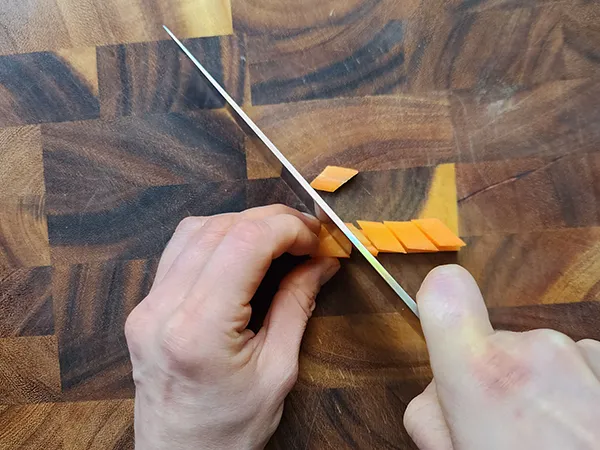
Lozenge approximate size 1/2 x 1/2 x 1/8 inch (10mm x 10mm x 3mm)
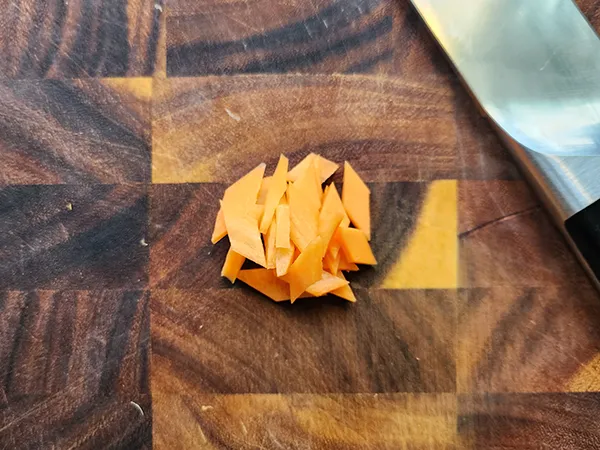
Tourne – Football ovals, tapered ends for fancy garnish.
Approximate size 2 inch long x 2 inch wide with 7 faces (5 cm long)
Fine brunoise – dice for garnish, and relishes.
With this, you go as fine as you can from the starting slice and keep it thin through your cut.
Approximate size 1/16 x 1/16 x 1/16 inch (1mm x 1mm x 1mm)
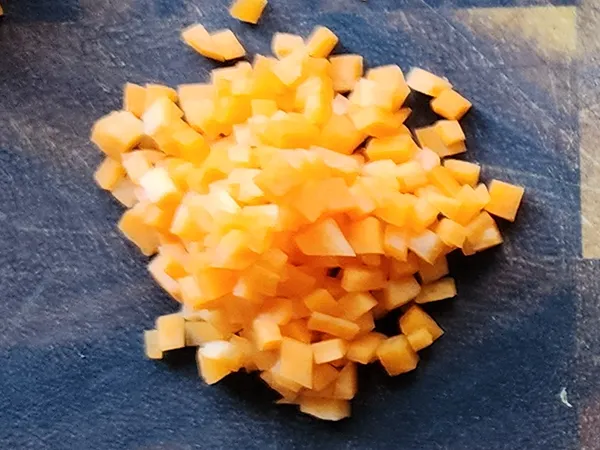
You can store your sliced or diced carrots for up to 3-4 days in an airtight container.
Uses for Dice Sizes
- Soups – small or medium dice add texture
- Meal prepping – uniform pieces for even cooking
- Salads – julienne, rondelle, or brunoise for crunch
- Roasts/stews – medium or large dice hold up well
- Stir fries – julienne or bonnet slices cook quickly
- Garnish – brunoise, lozenge, or julienne for color
Health Benefits
Carrots have many health benefits – they’re packed with vitamin A, potassium, and antioxidants. They’re versatile in cooking too, adding sweetness and color to soups, stews, roasts, salads, and more.
Having the right dicing technique for your dish ensures carrots cook evenly and have the perfect texture.
Is there an easy way to dice carrots?
Fermiere is a rustic cut that is easy to achieve and will look great in any home-style dish.
How do you cut carrots into little cubes?
For small diced cubes, first cut thin sticks around 5mm wide. Then stack sticks and cut crosswise into 5mm thick pieces.
How do you dice whole carrots?
Wash, peel, trim ends, and cut into uniform sticks. Then cut the sticks into the desired cube size based on recipe needs.
How do you properly chop carrots?
Keep pieces uniform by cutting them into sticks first. Tuck knuckles under and use just the front of the knife blade for control.
What’s the difference between a chop and a dice?
Chopping creates random irregular pieces while dicing makes uniform cubes or pieces.
How big is a diced carrot?
Size varies. Brunoise is 1-2mm, small dice 5mm, medium 1cm, and large dice 1.5-2cm. Match dice size to recipe.
Summary
There you have it, friends! I’ve shared all my best tricks for dicing carrots like a master chef. From making perfect little cubes to long, thin matchsticks, you’ve got all the skills now to take your carrot prep to the next level. It just takes a sharp knife, a steady hand, and a little practice.
I hope my tutorial has helped break down carrot cutting so it feels fun and doable in your kitchen. Check out my other how-to’s.
Want to keep improving your cooking? Check out my post on how to learn to cook like a chef! I share all my secrets for picking up kitchen skills quickly and making food more easily.
Put those new skills to work – make a healthy meal from my recipes.
Until then, get chopping and have fun! Remember, everything is possible one bite at a time!

